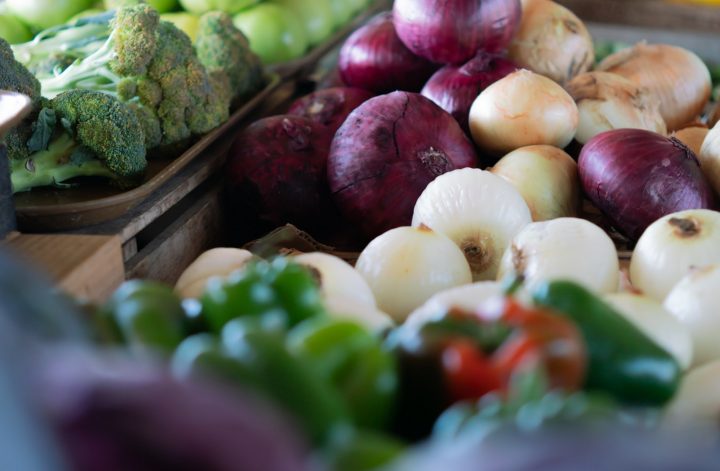The same advice is given by all professional chefs: “Go to the market and see what inspires you!” They can easily remark: “We all know the farmer’s market cliche of the chef, tote bags, and the occasional truck full of food as they fly from stall to stall, scheming the many amazing dishes they would make from these raw materials.” But suppose you, a regular person, have attempted to recreate this scenario. In that case, you are certainly familiar with the unrealistic expectations, wilted vegetables, and high hopes that follow an impetuous trip to the market.
Maybe when tomatoes are wonderfully ripe in the late summer, this slogan of “simply get inspired!” actually works. In the history of agriculture, no one has ever struggled to figure out how to cook a tomato properly, if not perfectly. However, the rest of the year is typically marked by higher expectations.
To illustrate: On a lovely October day, you cycle to the market, but when you get there, you can’t locate any of the products you were used to seeing all summer. So you purchase a butternut squash that fills half of your tote bag, some oyster mushrooms, and a lot of kale. When you get home, you are too worn out to be creative, so you saute the greens and mushrooms. The butternut squash remains on your windowsill as an incidental ornament throughout the winter since the thought of cooking it overwhelms you.
What causes this gap between aspiration and reality? For this, trained chefs receive formal training. They acquire dozens of formulas, ratios, and procedures during their training, whether in culinary school or on the job, which forms the ideal basis for simple improvisation. But fortunately for the rest of us, home cooks can also pick up unique cooking techniques.
The secret is to plan just a little to leave room for creativity. Here are a few tactics I employ to achieve that goal:
Make a flexible plan.
Create a broad strategy before visiting the market: Have a general notion of what you want to create, but avoid being too precise. For example, you might wish to cook spaghetti with veggies, herbs, and garlic butter. Be impromptu with the ingredients when you get to the market but follow the menu.
Think in categories: You may occasionally visit the market without wanting to prepare a meal but with an idea of the vegetables you need to stock up on for the next week. Instead of listing specific items in this situation, create a list of a few categories. Instead of “apples, potatoes, and kale,” use “one fruit, one starchy vegetable, and one leafy green.” Go straight for the spaghetti squash if the potatoes have a hint of green around the gills.
Provision your kitchen.
Try to keep staples in your pantry and refrigerator at all times. In this manner, you won’t need to make a separate journey to get eggs and butter if you locate figs at a farmers market for a reasonable price (it’s time for semolina cake!).
Flavor-packed components, such as spicy sauce, garlic, your preferred spice blend, olives, citrus fruits, anchovies, tomato paste, capers, etc., can be used to create layers of flavor. As you browse the market, examine your collection and what might go well with the products you come across. For instance, you choose Brussels sprouts because you know you have garlic, lemon, and pecorino Romano at home. Add cheese, lemon juice, zest, salt, and pepper while grilling the vegetables.
Establish a repertoire
Please make a list of flexible recipes: Make a list of your preferred recipes that emphasize fresh produce and keep it on your phone. To feel comfortable improvising and modifying a recipe, take a moment to consider different fruits and vegetables that can be used in their place. For instance, you can use any berry or stone fruit to make a blackberry cobbler. Use your list to prepare ahead of time, or peruse it quickly for some ideas as you make your way to the market.
Please list the following three simple sauces: It helps keep a few quick sauce recipes on hand because there’s nothing like a sauce to spice up a straightforward salad or vegetarian roast. Learn to make one creamy sauce, one bright and sunny sauce, and one herby sauce like pesto, lemony tahini, and pico de gallo, for instance. Alternatively, mornay, Vietnamese nuoc mam, and green goddess. The complete list! Salad dressings and pestos should be stored in tiny freezer-safe containers. To make a batch at any time, keep a few basic items on hand (cheese, mayonnaise, vinegar, and citrus).
Similarly, keep a phone list of your preferred cooking methods. Consider stir-frying, roasting, braising, confiting, and sautéing. We all have a go-to favorite, but varied cooking methods result in various flavors and textures.
Never stop learning
Follow your local farmers’ market on social media: It’s normal not always to know what’s in the season if you’re not well-versed in gardening. While you could do a lot of Googling, it’s much more enjoyable to follow your local farmers’ market to get a sense of what’s in season. Local seasonality varies, so paying attention to the market where you’ll be doing your shopping is essential.
Learn new methods and ingredients: Whenever you prepare a new recipe, take mental (or written!) notes of any techniques or ingredients you might use again. Consider which other veggies the chermoula would go well with if you were to prepare a dish for chermoula eggplant, for instance. Consider additional saucy items you may use to cook your eggs in addition to shakshuka if you learn how to make them.
Start a little herb garden in a pot, assist a friend with their garden, or join a volunteer organization. A little gardening will help you become more aware of the seasonal produce available, which will help you choose what to buy the next time you find yourself at a farmers market.


